Outsider Art refers to the spontaneous artistic production of innate talents but outsiders to the world of art education and conventional art, whose works are deemed to be of interest and quality. The English term was coined by British art historian Roger Cardinal in 1972 as the English equivalent for the French term Art Brut introduced in 1945 by artist Jean Dubuffet (Le Havre, 1901 - Paris, 1985). Dubuffet took an interest in and collected multiple original expressions of self-taught, psychotic, prisoners, mediums and eccentrics, people completely unfamiliar with artistic culture, socially and culturally remote from a desire for self-affirmation as artists. Dubuffet and Cardinal dealt primarily with extremely marginalized European women artists, until the research they sowed later took hold in the United States, where Outsider Art emerged as a phenomenon bringing together a wide range of marginal art.
Over time, the international definition has broadened to include the art of individuals who are perfectly capable of managing their social lives but who recoil, consciously or unconsciously, from the official system. Artists of all ages and backgrounds. Already Dubuffet in the mid-twentieth century had recognized in the work of these divergent characters a unifying trait: a raw quality of their artistic expression, unaffected by academic rules or official trends. According to Cardinal, the scope of Outsider Art is based on the idea that art making is a widespread human activity at all levels, and that the role the work of an outsider artist has to do with the nonetheless unconventional nature of art itself, its distance from artistic norms and common experience, as well as, of course, the aesthetic emotion it arouses.
“Outsider Art” has turned out to be a more flexible and neutral term than the historical notion of Art Brut, and has allowed the formation of a real parallel art system anyway, which has its own museums, galleries, collectors, magazines, auctions and fairs. In a globalized perspective from Europe to the United States, from Latin America to Asia, there are now more than eighty dedicated museum institutions in the world.


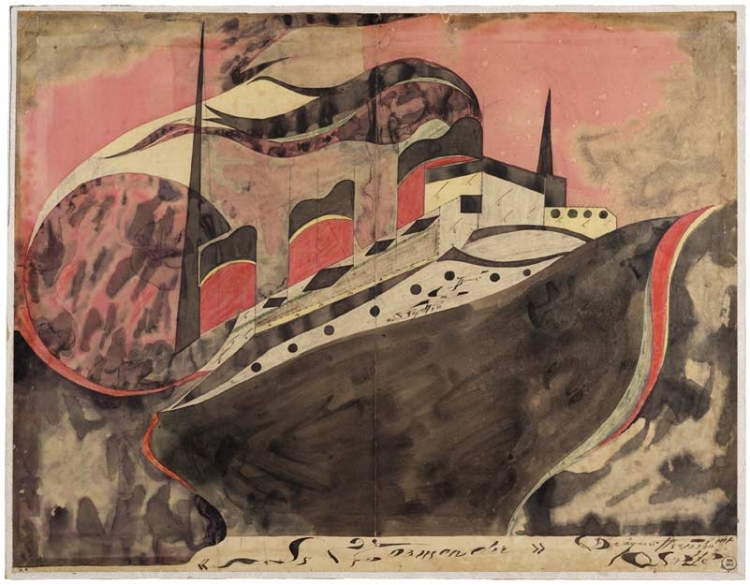
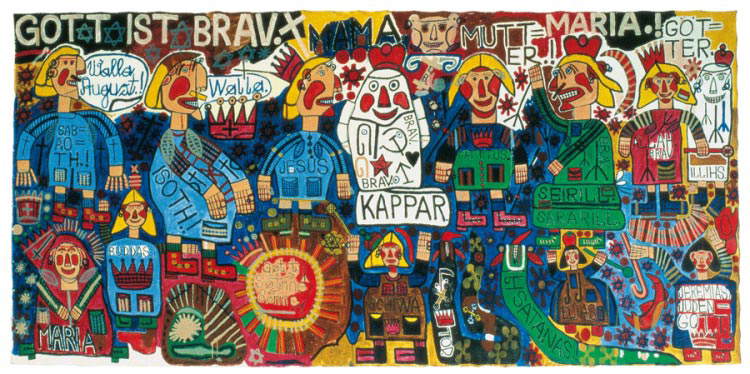
The classification of outsider art originated in the nineteenth century from the medical activities conducted in European psychiatric hospitals. The first collected works produced by psychiatric patients were organized and interpreted for the purposes of scientific research and analysis as potential clues to certain disorders and diseases. In the early twentieth century, they became interested not only in psychiatrists but also in artists who felt that they could find inspiration in these artistic samples; in fact, the initial investigation that Jean Dubuffet made in psychiatric institutions has behind it the studies conducted by two physicians, Walter Morgenthaler and Hans Prinzhorn, who in the 1920s were the first to recognize an aesthetic value in the work of some inpatients.
In 1921 the Swiss Morghenthaler published the first monograph devoted entirely to the creative work of a mentally ill man, Adolf Wölfli (Bowil, 1864 - Bern, 1930), who under treatment had devoted himself to drawing from a certain point in his life. In 1922 the German Prinzhorn presented in Heidelberg the works of numerous other inpatients in various European institutions (preserved in a large collection that is then housed today at theUniversity of Heidelberg) and gave to the presses The Artistic Production of the Mentally Ill, giving an artistic assessment of them beyond psychiatric interest. The volume would be a great inspiration for the Surrealists and Dubuffet.
In 1945 Dubuffet set off on a trip to Switzerland, in the company of Le Corbusier and the writer Jean Paulhan, in search of the “primitives of the 20th century,” surveying not only psychiatric hospitals but also prisons and touring the countryside to discover stories and works by eccentric, marginalized or isolated creatives. In 1947, together with artists André Breton and Slavko KopaÄ, critic Michel Tapié and Paulhan himself among others, he brought together the Compagnie de l’Art Brut in Paris, continuing to collect hundreds of works made by unknown personalities. Dubuffet believed that this pursuit of Art Brut, understood as"raw art," was inspiring for artistic exercise, as it was produced as a purer, more sincere and authentic emotional expression than that of academic artists influenced by mainstream culture.
The profile of the Brut artist lives and produces in total autonomy from the world and social conformity, this means that he does not produce art because it is recognized as such, but produces out of creative urgency or necessity, as the only apparent recipient of his works. The Compagnie served to organize further research and curatorial activities before its dissolution in 1951 due to a disagreement between Dubuffet and the Surrealist Breton. From 1949, when the first Art Brut exhibition was held at the Galerie René Drouin in Paris, to 1971, when Dubuffet donated his entire collection to the City of Lausanne in Switzerland, 133 author profiles and related works had been collected. To date, La Collection de l’Art Brut, later opened in 1976, has more than 1,000 creators and 70,000 works.
Meanwhile, in 1962 the Compagnie had been reformed with more than 100 members, and another major exhibition was held in 1967 at the Musée des Arts Décoratifs in Paris. At the same time in the 1960s, psychiatrist Leo Navratil ’s activities at the Maria Gugging psychiatric clinic on the outskirts of Vienna were helping to establish what is now a unique cultural center, the important Art Brut Center Gugging. Then from 1979 came the capital exhibition Outsiders: An Art Without Precedent or Tradition curated by Roger Cardinal and Victor Musgrave at the Hayward Gallery in London, which constituted the largest push up to that time toward this type of artistic production. The more than 400 works exhibited there, by French, Swiss, German and Austrian, American and British artists, formed the starting nucleus of one of the most significant public collections in the United Kingdom, The Musgrave Kinley Outsider Art Collection now at the Whitworth Art Gallery in Manchester. From the 1980s in fact there was widespread interest also from public museums as well as private collectors. Since then, specialized magazines and galleries as well as dedicated events have sprung up, such as the Outsider Art Fair held since 1993 in New York and Paris. Overall, with the international diffusion of recent years, Outsider art has been almost entirely joined by professional artists.
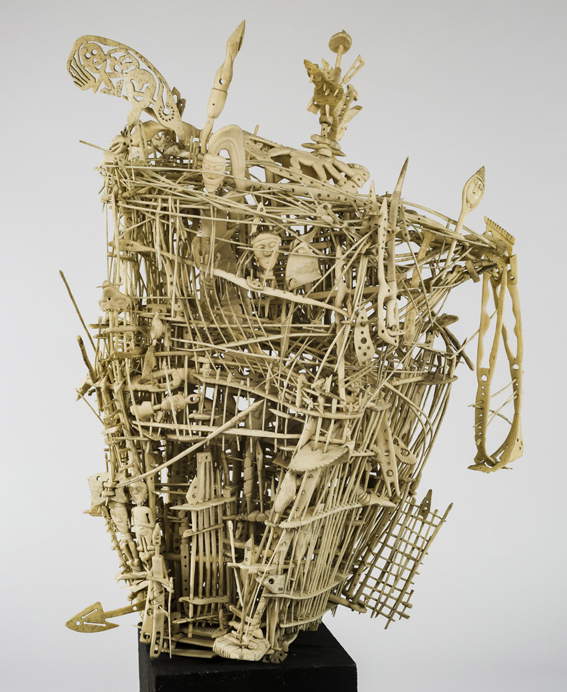
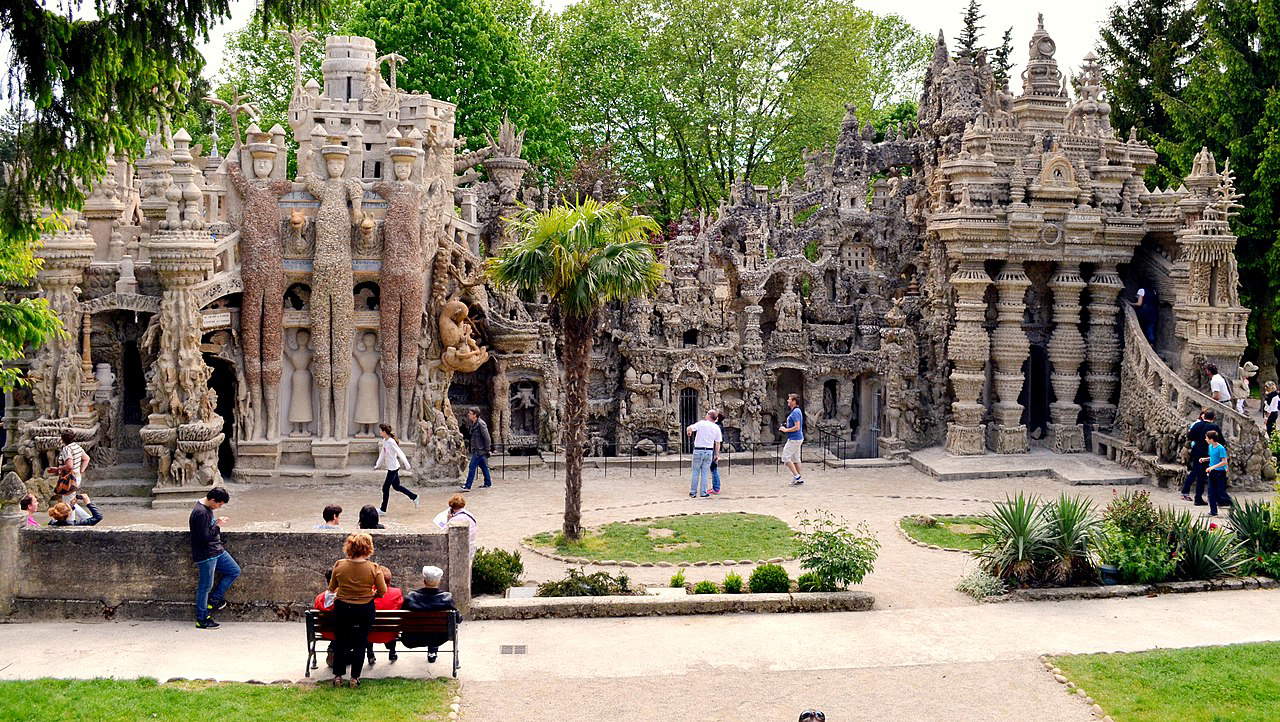
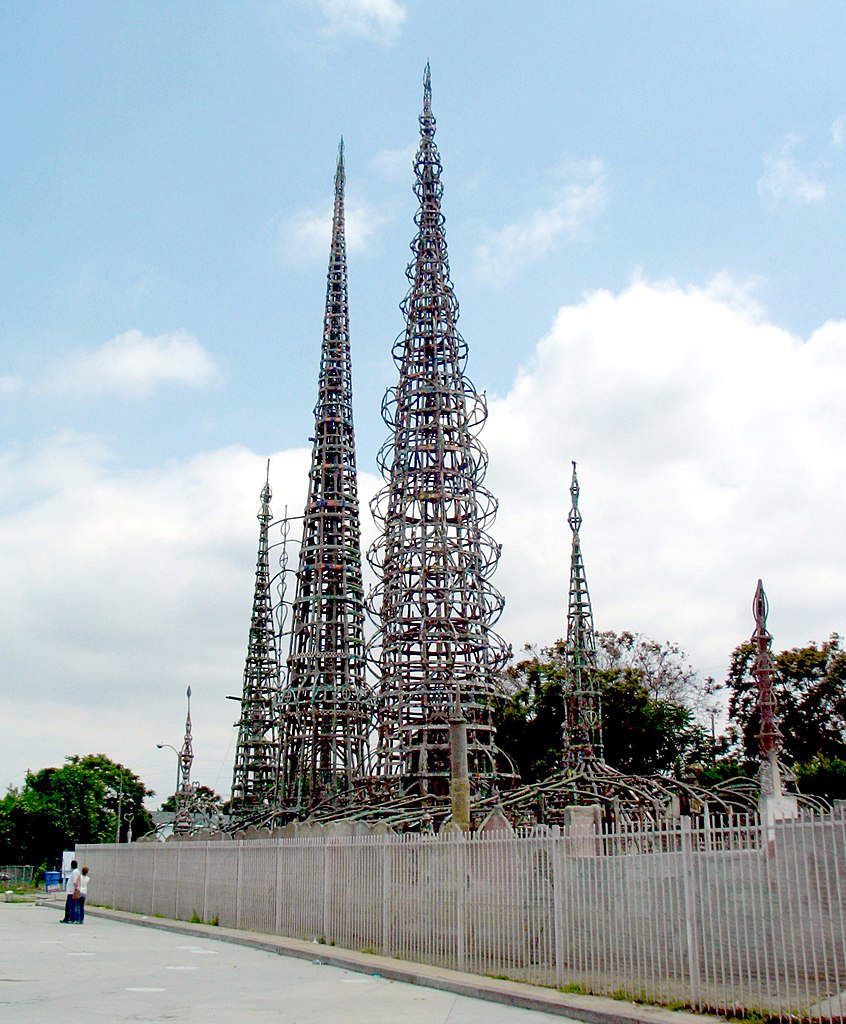
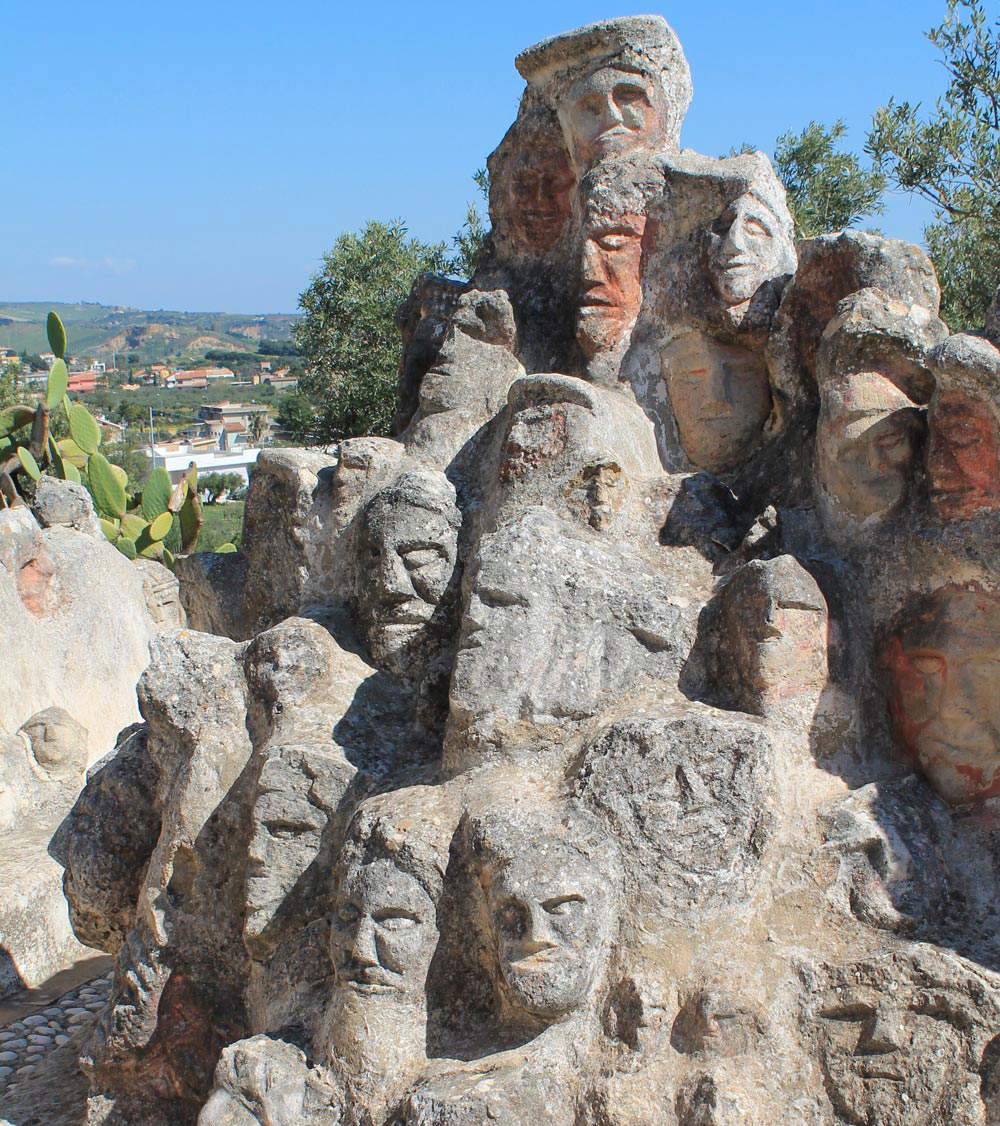
Outsider art is not a movement with which artists identify, but rather a membership assigned, even posthumously, to significant self-taught creators. The variety of languages and techniques, from drawing and painting to sculpture and constructions of "visionary environments," is surprising and reflects the singularity of each creator, who resorts to media and materials that are not always canonical in order to express himself, with unpredictable compositional outcomes. For example, one of the historical authors championed by Dubuffet, Guillaume Pujolle, used for his watercolors the medicinal liquids taken from the outpatient clinic of the hospital where he was hospitalized. And more widely, the documented artists used whatever objects and materials were available, including the most unthinkable, and with makeshift tools since they mostly created from within the institutions in which they were confined or in situations of isolation and marginalization, with what they had access to.
However, even outside institutions and without restrictions, Art Brut / Outsider artists tend to use unusual products and media, tools and modes. Dubuffet wrote that these authors “derive everything (subject matter, choice of materials, technique, rhythm, modes of writing...) from their own depths and not from stereotypes of classical art or fashionable art,” yet share some tendencies in common toward certain themes and motifs. For example, the obsessive repetition of certain chosen subjects, the interest in portraits and their own self-portraits or animals, as well as the inclination toward decorativism and theaccumulation and filling of any given space; or even the combination of writing and image and a certain uninhibited directness of certain content. Frequent but obviously not exclusive characters. As well as disinterest in authorship (often not signing works), prolific and compulsive production or creative experience gained in adulthood.
From the graphic-pictorial point of view, a widespread feature is the definition of a personal world of symbols, colors and shapes that each author is able to imagine. Adolf Wölfli, who produced thousands of works from a small cell in his Swiss asylum, soon began work on his life story illustrated in as many as 25.000 pages: a densely illustrated narrative with intricate drawings of geometric shapes, fictional maps, portraits, palaces, churches, kings, queens, talking animals and plants, and also incorporating text and musical notations and collages.
Beginning with Wölfli, there are countless outsider authors who insert their own alphabet, names or seemingly incongruous lists, enigmatic traces of storytelling or musical notes into the image. Among the countless others is August Walla (Klosterneburg, 1936 - Vienna, 2001), who composed words and images in figurative scenarios with gods, demons and prophets alternating with names, foreign words and invented terms. Walla was a patient at the Gugging Hospital, where as noted above the psychiatrist Navratil stimulated patients to artistic work.
Another exemplary case is that of Carlo Zinelli (San Giovanni Lupatoto, 1916 - Chievo, 1974), a psychically labile former mountain man who developed his own very personal language of graphic elements and silhouettes of stylized figures and animals in profile, the first Italian creator to enter the Collection de l’Art Brut and one of the most recognized authors today. As with painting and drawing, obtained, for example, with colors drawn from grasses and other ’solutions’ on salvaged cardboard, random sheets or magazine cuttings, the use of found objects or ’poor’ materials, assembled with skill and imagination, prevails in many forms and styles in sculpture. From stone to wood, cork to breadcrumbs, scrap metal to terracotta to concrete.
In Italy, the figure of Antonio Ligabue, long considered a ’naïf’ artist and then still an outsider, a brut artist, eludes classification: his art, however, is foreign to the cultural context of Art Brut theorized by Dubuffet, not least because Ligabue was an artist aware of his own means, with some knowledge of art history, and endowed with an originality and expressive force not often found in outsiders, so much so that today there is a tendency to place him in the groove of expressionist painting.
Other historical works include The New World (1898 - 1900) by Francesco Toris (Ivrea, 1863 - Collegno, 1918), a latticework obtained by interlocking hundreds of polished and chiseled animal bones that the artist had procured from the kitchen of the center where he was interned. In the case of numerous authors around the world, moreover, there is an intuition to construct, through slow structuring, irregular architectural environments on a large scale. One discovers at every latitude spaces, buildings and gardens full of oddities, majestic works created in solitude and by pure and authentic creative impulses. Examples include, in Hauterives, France, the Palais Idéal (1879 - 1912) by the letter carrier Ferdinand Cheval (Charmes-sur-l’Herbasse, 1836 - Hauterives, 1924), a self-taught architect who worked for no less than thirty-three years on the construction of his ideal environment, a labyrinth made up of stones he found along his path. Or the hand-built sculpture-towers of Simon Rodia (Serino, 1879 - Martinez, 1965), Watts Tower (1921-1954), an Italian immigrant who in the Watts neighborhood of Los Angeles built seventeen structures of varying heights again over thirty years out of steel rods covered with various salvaged decorative materials, such as porcelain, shells, pieces of bottles and more.
Italian exemplars among the best known are Filippo Bentivegna ’s (Sciacca, 1888 - 1967) Castello Incantato in Sciacca, an eccentric constellation of human heads carved on rock, branches and tree trunks, and Ezechiele Leandro ’ s (Lequile, 1905 - San Cesario di Lecce, 1981), a massive installation of figures and totems in concrete encrusted with shards, glass, iron and multiple scraps. Works that are all understood by considering the fundamental and conditioning personal histories of the artists.
 |
| Outsider Art. origins, development, and trends between the twentieth century and the present day |
Warning: the translation into English of the original Italian article was created using automatic tools. We undertake to review all articles, but we do not guarantee the total absence of inaccuracies in the translation due to the program. You can find the original by clicking on the ITA button. If you find any mistake,please contact us.